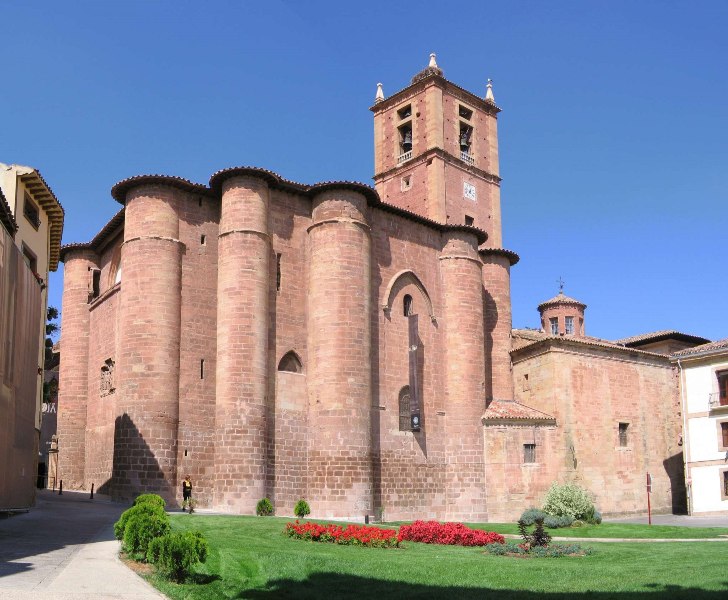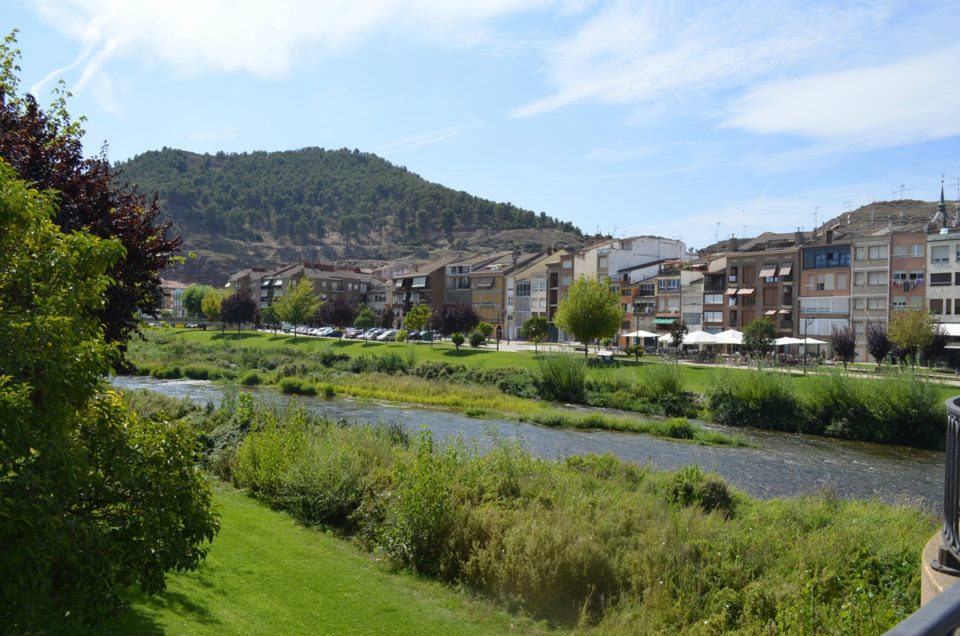Monastery of Santa María La Real
The monastery was founded by king García Sánchez III “the one from Nájera” and his wife Doña Estafanía de Foix who commissioned its construction in 1052. The origin of its foundation are misted in the legend which tells how the king was out hunting and chased his prey into a cave where he found a mysterious image of the Virgin and a jar of lilies, a bell and a lantern. Some time later the king reconquered the Lower Rioja city of Calahorra from the Moors and built the monastery of Santa María La Real as an offering to the Virgin for her help. At the same time he set up a Military Order of the Knights of the Terrace or of the Jug, one of the most ancient orders in Spain.

In 1079 Alfonso VI of Castile incorporated the monastery into the Benedictine order of Cluny together with the group of clergy who lived in it from its creation and who remained until the disendowment of Mendizábal in 1835. Since 1895 a community of Franciscan friars have run the monastery.
The altarpiece of the main chapel dates from the late 17th c. and is Baroque in style.In the centre the Romanesque carving of Santa María La Real holding the infant Christ on her left knee is of outstanding interest.
The early 16th c. choir is in “Catholic Monarch” style and here you can see the influence of the late Gothic and early Renaissance era. The carved choirstalls in walnut are a masterpiece of florid Gothic. In the abbot’s throne we can admire the polychrome figure of King Don García.
The cloister was begun in the early 16th c., known as the Cloister of the Knights, was for centuries the burial place of many nobles. Among them we should mention Diego López de Haro with a recumbent sculpture from the 13th c. and at his feet, the Gothic tomb of his wife, Doña Toda Pérez de Azagra. The harmonious mixture of styles such as the florid Gothic of the vaulting and the Plateresque of the tracery arches have created a surprising work of architecture well worth a visit.
Monastery of Santa Elena
Doña Aldonza Manrique de Lara, daughter of the Dukes of Nájera founded the monastery in the mid 16th c., outside the city. Nothing remains of this building and the current complex consists in church, cloister and other monastery buildings inside the cloister.
The monastery church is the only part open to visitors. It dates from the 17 th century and is the work of the stonemasons Pedro Ezquerra de Rozas and José de la Puente Liermo. Strung along the nave you can see various altarpieces of great beauty, two of them in Rococo style in the arms of the transept, one of them with the image of the Conception from the mid 17th c., and the other with that of Santa Clara. The main altarpiece in baroque style is made up of a base, a single block of three vertical series of panels and top piece, the work of Mateo Rubalcaba, in the centre of the body is a fine carving of Santa Elena.
Wrought iron railings at the foot of the church composed of two parts dating from 1660 separate the part open to the public from the closed order where nowadays the Franciscan Clarisa nuns live.






